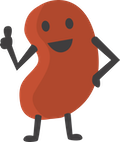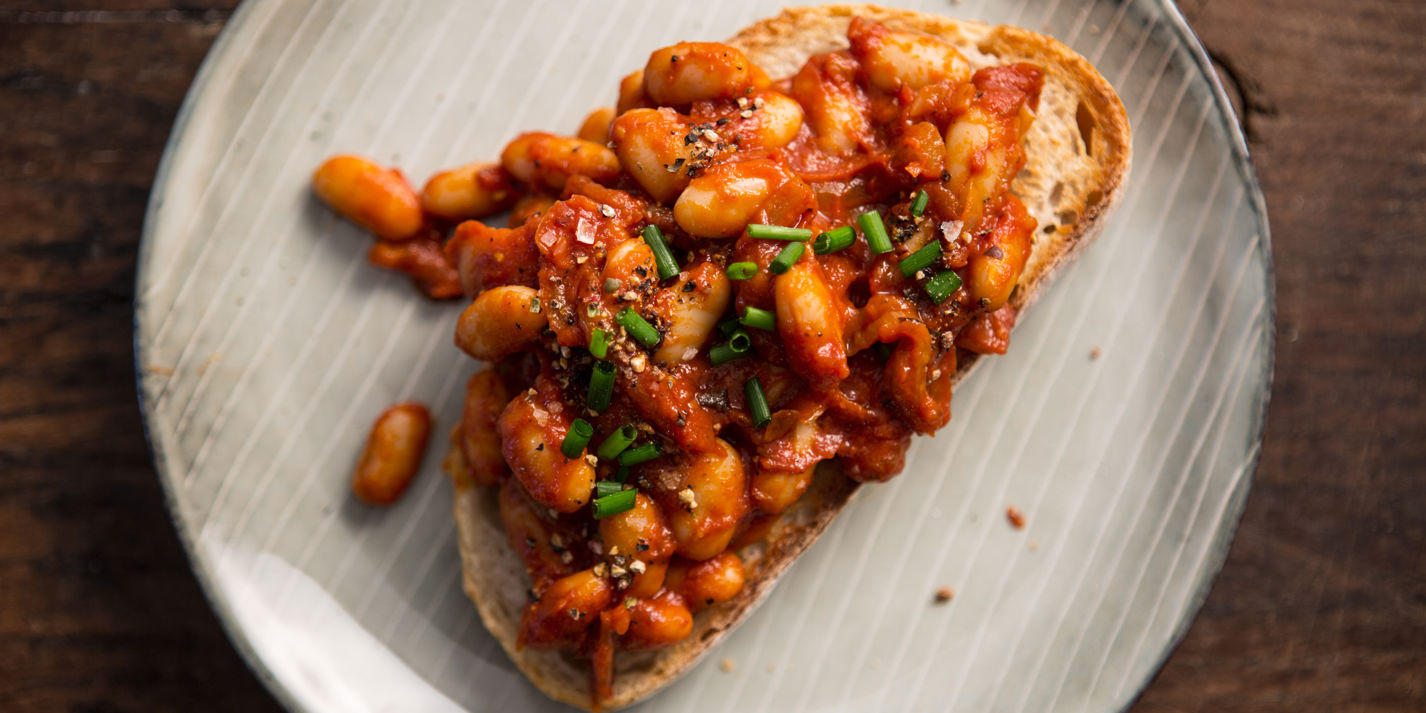A bean is the seed of several plants in the family Fabaceae, which are used as vegetables for human or animal food. They can be cooked in many different ways, including boiling, frying, and baking, and are used in many traditional dishes throughout the world.
Terminology
The word "bean" and its Germanic cognates (e.g. German Bohne) have existed in common use in West Germanic languages since before the 12th century, referring to broad beans, chickpeas, and other pod-borne seeds. This was long before the New World genus Phaseolus was known in Europe. With the Columbian exchange of domestic plants between Europe and the Americas, use of the word was extended to pod-borne seeds of Phaseolus, such as the common bean and the runner bean, and the related genus Vigna. The term has long been applied generally to many other seeds of similar form, such as Old World soybeans, peas, other vetches, and lupins, and even to those with slighter resemblances, such as coffee beans, vanilla beans, castor beans, and cocoa beans. Thus the term "bean" in general usage can refer to a host of different species.
Cultivation
Unlike the closely related pea, beans are a summer crop that needs warm temperatures to grow. Legumes are capable of nitrogen fixation and hence need less fertiliser than most plants. Maturity is typically 55–60 days from planting to harvest. As the bean pods mature, they turn yellow and dry up, and the beans inside change from green to their mature colour that they have when fully ripe. Many beans are vines, as such the plants need external support, which may take the form of special "bean cages" or poles. Native Americans customarily grew them along with corn and squash (the so-called Three Sisters), with the tall cornstalks acting as support for the beans.
History
Beans were an important source of protein throughout Old and New World history, and still are today.
Beans are one of the longest-cultivated plants in history. Broad beans, also called fava beans, are in their wild state the size of a small fingernail, and were first gathered in Afghanistan and the Himalayan foothills. An early cultivated form were grown in Thailand from the early seventh millennium BCE, predating ceramics. Beans were deposited with the dead in ancient Egypt. Not until the second millennium BCE did cultivated, large-seeded broad beans appear in the Aegean region, Iberia, and transalpine Europe. In the Iliad (8th century BCE), there is a passing mention of beans and chickpeas cast on the threshing floor.
The oldest-known domesticated beans in the Americas were found in Guitarrero Cave, an archaeological site in Peru, and dated to around the second millennium BCE. Genetic analyses of the common bean Phaseolus show that it originated in Mesoamerica, and subsequently spread southward, along with maize and squash, traditional companion crops.
Most of the kinds of beans commonly eaten today are part of the genus Phaseolus, which originated in the Americas. The first European to encounter them was Christopher Columbus, while exploring what may have been the Bahamas, and saw them growing in fields. Five kinds of Phaseolus beans were domesticated by pre-Columbian peoples: common beans (P. vulgaris) grown from Chile to the northern part of what is now the United States; and lima and sieva beans (P. lunatus); as well as the less widely distributed teparies (P. acutifolius), scarlet runner beans (P. coccineus), and polyanthus beans.
One well-documented use of beans by pre-Columbian people as far north as the Atlantic seaboard is the "Three Sisters" method of companion plant cultivation: Many tribes would grow beans together with maize or "corn", and squash. The corn would not be planted in rows as is done by European agriculture, but in a checkerboard/hex fashion across a field, in separate patches of one to six stalks each. Beans would be planted around the base of the developing stalks, and would vine their way up as the stalks grew. All American beans at that time were vine plants; "bush beans" were cultivated more recently. The cornstalks would work as a trellis for the bean plants, and the beans would provide much-needed nitrogen for the corn. Squash would be planted in the spaces between the patches of corn in the field. They would be provided slight shelter from the sun by the corn, would shade the soil and reduce evaporation, and would deter many animals from attacking the corn and beans because their coarse, hairy vines and broad, stiff leaves are difficult or uncomfortable for animals such as deer and raccoons to walk through, crows to land on, and are a deterrent to other animals as well.
Beans were cultivated across Chile in Pre-Hispanic times, likely as far south as Chiloé Archipelago.
Dry beans come from both Old World varieties of broad beans (fava beans) and New World varieties (kidney, black, cranberry, pinto, navy/haricot).
Lectins are defined as proteins that bind to carbohydrates. The same features that lectins use to defend plants in nature may cause problems during human digestion. They resist being broken down in the gut and are stable in acidic environments, features that protect lectin-containing plants in nature.
They are found in all plants, but raw legumes (beans, lentils, peas, soybeans, peanuts) and whole grains like wheat contain the highest amounts of lectins
Cooking, especially with wet high-heat methods like boiling or stewing, or soaking in water for several hours, can inactivate most lectins. Lectins are water-soluble and typically found on the outer surface of a food, so exposure to water removes them.
 "What's Your Favorite way to Eat Beans?"
"What's Your Favorite way to Eat Beans?"
Megathreads and spaces to hang out:
- 📀 Come listen to music and Watch movies with your fellow Hexbears nerd, in Cy.tube
- 🔥 Read and talk about a current topics in the News Megathread
- ⚔ Come talk in the New Weekly PoC thread
- ✨ Talk with fellow Trans comrades in the New Weekly Trans thread
- 👊 Share your gains and goals with your comrades in the New Weekly Improvement thread
reminders:
- 💚 You nerds can join specific comms to see posts about all sorts of topics
- 💙 Hexbear’s algorithm prioritizes comments over upbears
- 💜 Sorting by new you nerd
- 🌈 If you ever want to make your own megathread, you can reserve a spot here nerd
- 🐶 Join the unofficial Hexbear-adjacent Mastodon instance toots.matapacos.dog
Links To Resources (Aid and Theory):
Aid:
Theory:

Mussolini also did more socialist organizing than most of this website, SAD! Left it all behind for a big bag and power. OG poser
Pretty sure he was also a British spy.
yea, he was paid by the mi5 weekly
And a better fed than most of this website, DEPRESSING!